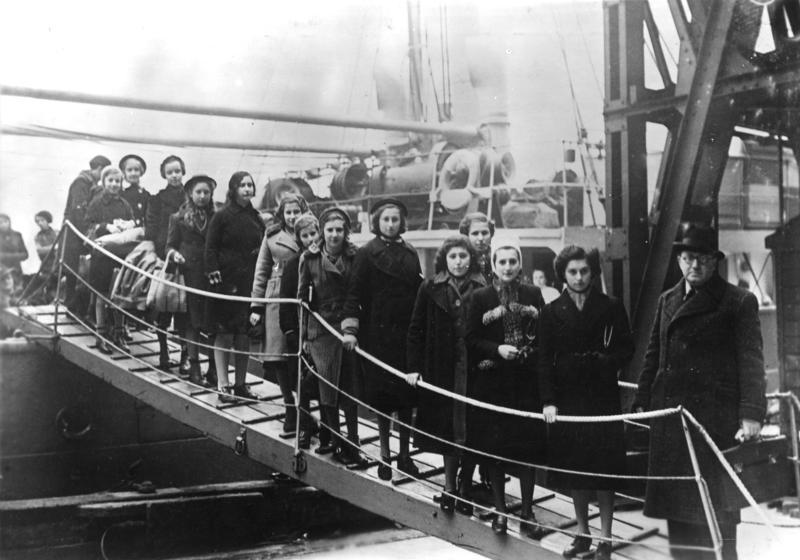The Kindertransport was an evacuation effort coordinated by Jews and gentiles that saved approximately 10,000 Jewish children and other young people fleeing Nazi persecution in the year before World War II began.
On Kristallnacht (“The Night of Broken Glass”), November 9, 1938, Adolf Hitler and Nazi leaders ordered a coordinated attack by paramilitaries and Hitler Youth who beat countless Jews throughout Germany and murdered ninety-one. They also set fire to synagogues, destroyed Jewish-owned businesses, and burglarized Jewish homes. Police arrested approximately 30,000 German Jews and sent them to concentration camps. Following Nazi orders, police officers did not arrest the perpetrators of these assaults and murders, nor did firefighters douse the flames consuming the synagogues. Instead fire departments protected homes and businesses belonging to non-Jews.

Friends in Britain had formed the German Emergency Committee (GEC) of the Religious Society of Friends in 1933, after Hitler had been in power just a short time. After Kristallnacht, the Committee, with partner groups, committed to helping Jewish children flee Poland, Austria, Germany, and Czechoslovakia and provided resources to help them live in other countries. Quakers had organized many relief programs after the end of World War I, and were recognized by all Germans, including the Jewish community, as a reliable source of humanitarian aid.
Bertha Bracey, secretary of the GEC, connected with Wilfrid Israel, a German Jewish philanthropist in Berlin, through whom she became acquainted with leaders of Jewish women’s groups throughout Germany.. At their request, Bracey started helping refugees escape. Persecuted people approached Quakers for help at Friends Centers in Frankfurt, Berlin, and Nuremberg.
Quakers accompanied children on their journey to Britain, which took them through Holland. After arriving in Britain, the young people lived with Friends and non-Quaker families, in a Quaker school, in a hostel, at a summer camp, and in a repurposed hotel. The GEC also provided refugees with educational resources and sponsored their work visas.
The now-shuttered Ayton School in North Yorkshire housed young refugees. Dovercort Camp, outside of Harwich, became a receiving facility for recently relocated refugees. Bunce Court School in Kent also became home to children fleeing persecution. Cheadle Local Meeting in Merseyside established hostels to house the young people.The Palace Hotel in London was converted into a refugee residence called Bloomsbury House.
The last Kindertransport refugees left Germany in September 1939, after Britain and Germany went to war. The last group of young people departed from the Netherlands en route to Britain in May 1940. After the outbreak of World War II the British classified the German refugees who had arrived by Kindertransport as “enemy aliens” and interned 1,000 teenage boys who they considered security risks.
Quakers continued to help with refugee resettlement and humanitarian aid during and after the war, and some German Quakers were sent to concentration camps for assisting persecuted Jews. The American Friends Service Committee and the British Friends Service Council received the 1947 Nobel Peace Prize on behalf of all the Quakers who helped Jews and others fleeing persecution.
Learn more at Friends Journal
“Civility Can Be Dangerous,” Lucy Duncan
“The School That Escaped the Nazis,” reviewed by Judith Favor
“The Little Museum That Could,” Michael Luick-Thrams
Photograph: A group of young Jewish refugees arrive in London, brought to England through the work of the Kindertransport, 1939 (German Federal Archive)

